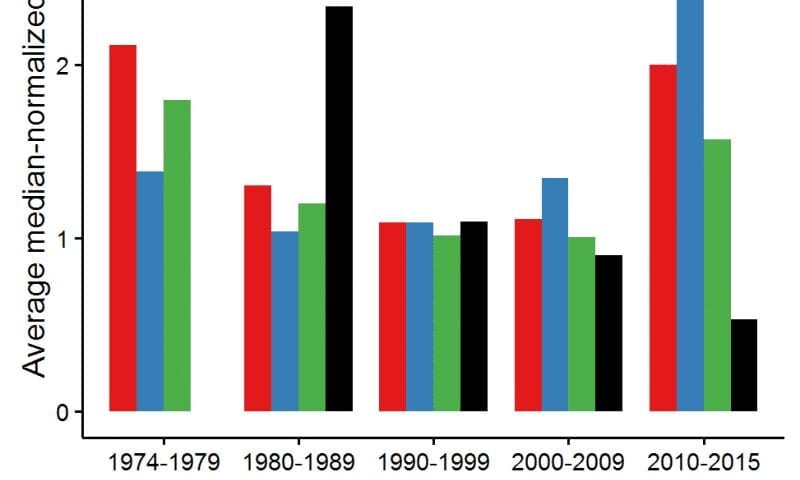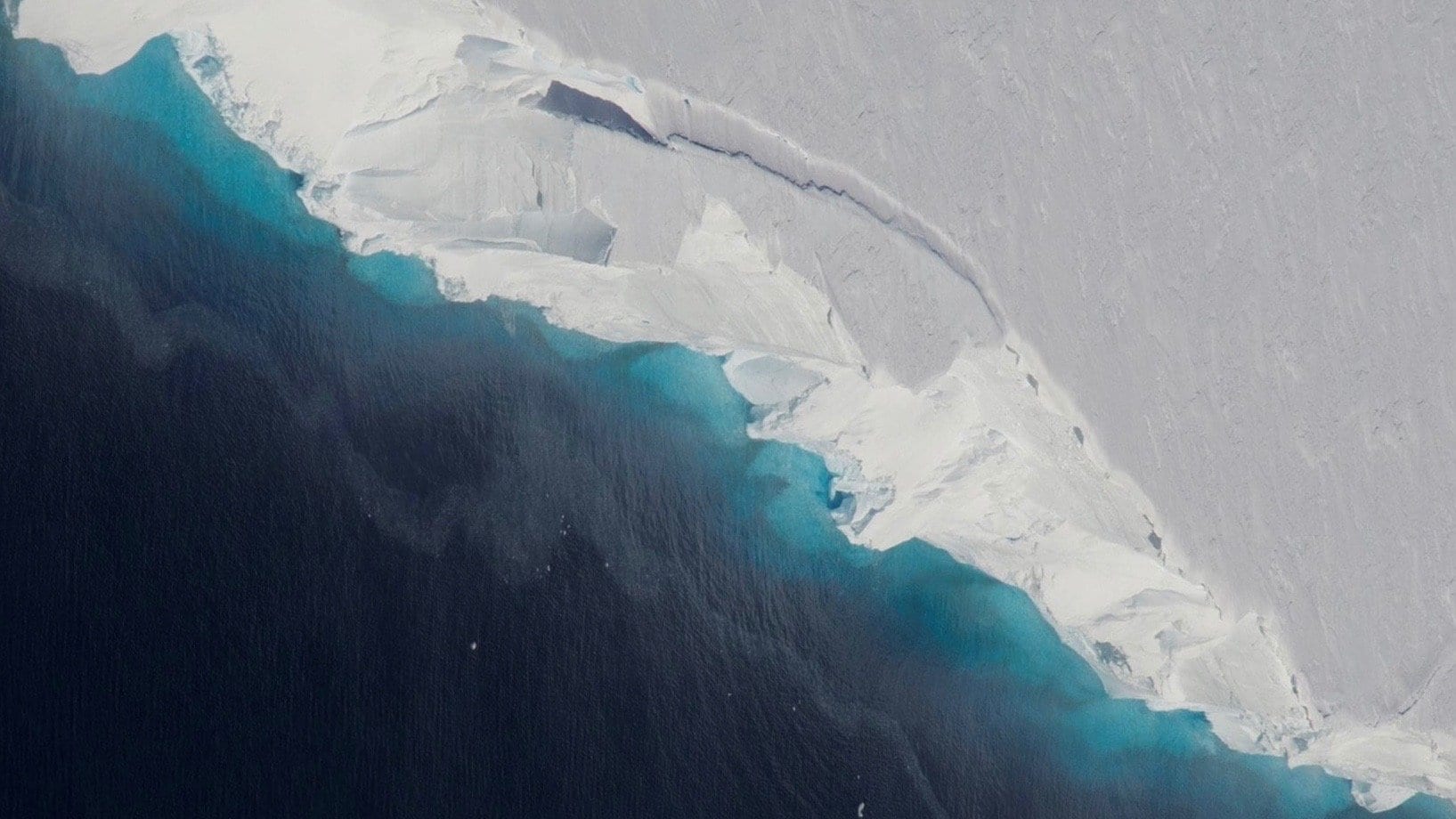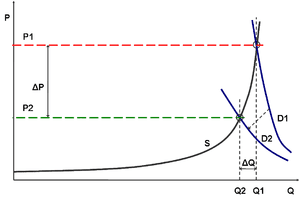
“The extreme weather we have had in recent years is but one example of the highly complex, global science-based challenges we are now living with”
Chemists who are members of the American Chemical Society (ACS), collaborating with scientists from other fields through the University of California, San Diego (UCSD) Center for Aerosol Impacts on Climate and the Environment (CAICE), have discovered disturbing climate trends close to Earth’s surface.
“The extreme weather we have had in recent years is but one example of the highly complex, global science-based challenges we are now living with,” said ACS President Marinda Li Wu, Ph.D. “The climate research conducted by CAICE is providing startling insights that I believe will prove to be as important in protecting human health as the ozone research of 30 years ago.”
The current research is being led by Kimberly Prather, Ph.D., director of CAICE and UCSD Distinguished Chair in Atmospheric Chemistry, and Vicki Grassian, Ph.D., co-director of CAICE and F. Wendell Miller Professor, Department of Chemistry, The University of Iowa. Grassian is also an ACS Fellow.
Thirty years ago, scientists discovered that chlorofluorocarbons degraded ozone high above the Earth’s surface. Furthermore, particulates, specifically polar stratospheric clouds, played a role in these processes. Subsequently, the Montreal Protocol, an international treaty signed in 1987, was enacted, fostering policies that have protected the ozone layer, and thus, people, from intense ultraviolet radiation ever since.
Now, the team led by Prather and Grassian is studying how the more complex troposphere is impacted by aerosols, particulates suspended in the air that can circle the globe in a matter of weeks or even just days. These particulates are emitted from a wide range of sources, including coal-fired power plants, vehicles, wildfires, volcanoes, desert dust and even sea spray. Depending on their chemical make-up, aerosols have been shown to have a vast array of environmental effects, impacting cloud formation, precipitation levels and human health. Yet, aerosols are the most poorly understood component of our atmosphere.
The Latest Bing News on:
Aerosol Impacts on Climate
- Controversial methods to cool the Earth by reflecting sunlight gain traction as global temperatures riseon April 26, 2024 at 2:20 pm
Relatively untouched ideas are gaining momentum as potential short-term solutions to lower Earth's temperature.
- Solar geoengineering to cool the planet: Is it worth the risks?on April 25, 2024 at 8:53 am
When I first wrote about geoengineering in 2012 , it was considered far-fetched at best, and crazy by most. But 12 years later, while there is still controversy and considerable resistance to ...
- The models are wrong, climate change is accelerating faster than predictedon April 24, 2024 at 9:02 pm
Scientists are starting to realise that the climate models they have been using to predict the rate of global warming are wrong ...
- Modeling broader effects of wildfires in Siberiaon April 24, 2024 at 6:00 am
As wildfires in Siberia become more common, global climate modeling estimates significant impacts on climate, air quality, health, and economies in East Asia and across the northern hemisphere.
- Earth Day 2024: What's the difference between global warming, climate change? What to knowon April 22, 2024 at 11:27 am
On Earth Day, learn about the difference between global warming and climate change, and find out what you can do to maintain planetary health.
- New scientific interventions are here to fight climate change. But they aren’t silver bulletson April 22, 2024 at 3:00 am
Giant sun shades, 40-foot-tall air filters, stratospheric sulfur injections: Here are some of the wild and wondrous ways we might save the planet.
- A Radical Experiment Shows Cloud Brightening May Be Our Climate’s White Knighton April 16, 2024 at 6:29 am
One idea is marine cloud brightening (MCB), and a new study says that MCB could also create cloud cover, making it an even better ‘painkiller’ for climate change that previously thought. However, ...
- The Paradox That's Supercharging Climate Changeon April 15, 2024 at 4:00 am
Humanity needs to burn less fossil fuels. But that means fewer aerosols to help cool the planet—and a potential acceleration of global warming.
- The Potential Hazards of Sulfate Aerosol Injection for Climate Mitigation: A ScienceAlert Overviewon April 7, 2024 at 2:23 pm
In the face of mounting climate crisis evidence and record-breaking environmental indicators, the call for unconventional solutions has become more prominent. Yet, numerous studies highlight the ...
- Pristine Finnish peatland offers glimpse into pre-industrial atmosphereon April 3, 2024 at 5:00 pm
"It also demonstrates that pure biogenic aerosol formation could be a widespread and frequent phenomenon in the present day. This will potentially impact the climate of areas dominated by ...
The Latest Google Headlines on:
Aerosol Impacts on Climate
[google_news title=”” keyword=”Aerosol Impacts on Climate” num_posts=”10″ blurb_length=”0″ show_thumb=”left”]
The Latest Bing News on:
Disturbing climate trends
- The Odds For Rate Hikes May Have Increased Dramaticallyon April 26, 2024 at 10:09 am
Inflation is accelerating. Read why the current policy stance may need to shift to rate hikes if inflation continues to rise.
- Emperor penguins will not survive the current rate of sea ice declineon April 26, 2024 at 6:30 am
The situation for emperor penguins is serious – shrinking sea ice is wreaking havoc on their breeding grounds.
- Teen Raleigh girl's death a sign of 'incredibly disturbing' trend for youth violenceon April 25, 2024 at 7:18 am
"The increase in violence among our youth is incredibly disturbing." In 2023, the North Carolina Department of Public Safety recorded 66 instances of juveniles between the ages of 16 and 17 being ...
- Ultra-fast fashion is a disturbing trend undermining efforts to make the whole industry more sustainableon April 20, 2024 at 5:00 pm
We know fast fashion is bad for the environment. Ultra-fast fashion makes matters worse. This disturbing trend towards disposable clothing is the opposite of sustainable. Here’s what must be ...
- Disturbing Trend for Pirates Offense Must End Soonon April 18, 2024 at 5:00 pm
Disturbing Trend for Pirates Offense Must End Let’s Get Geeky and Look at Some Stats After 10 games, at which point they were 8-2, the Pirates ranked fourth in the National League with 59 runs ...
- A Radical Experiment Shows Cloud Brightening May Be Our Climate’s White Knighton April 16, 2024 at 6:29 am
And that’s just another step in an already disturbing trend that sparked the creation of the Paris Climate Accord in 2015. There’s just one problem: the world is falling behind its emission ...
- Richmond sees disturbing trend with four juvenile homicides, three in less than one weekon April 15, 2024 at 4:03 am
Richmond Police found a 14-year-old lying on the road with a gunshot wound near Fourth Avenue and Front Street at 10:54 p.m. After being taken to the hospital for treatment, he later died ...
- Mind the climate gapson April 15, 2024 at 2:14 am
Unstable beliefs are also vulnerable because of two gaps in our thinking about climate change. Comeau emphasizes that both can be addressed by concerted communication. One is the distance gap, the ...
- Uncharted Territory Dead Aheadon April 11, 2024 at 10:57 pm
When America’s leading authority on the climate system Gavin Schmidt of NASA throws his hands up in the air, exclaiming, we’ve got a knowledge gap for the ...
- March was the hottest on record in alarming 10-month streakon April 9, 2024 at 3:02 pm
The world has just experienced its hottest March on record, according to the European Union's Copernicus Climate Change Service (C3S).
The Latest Google Headlines on:
Disturbing climate trends
[google_news title=”” keyword=”disturbing climate trends” num_posts=”10″ blurb_length=”0″ show_thumb=”left”]










